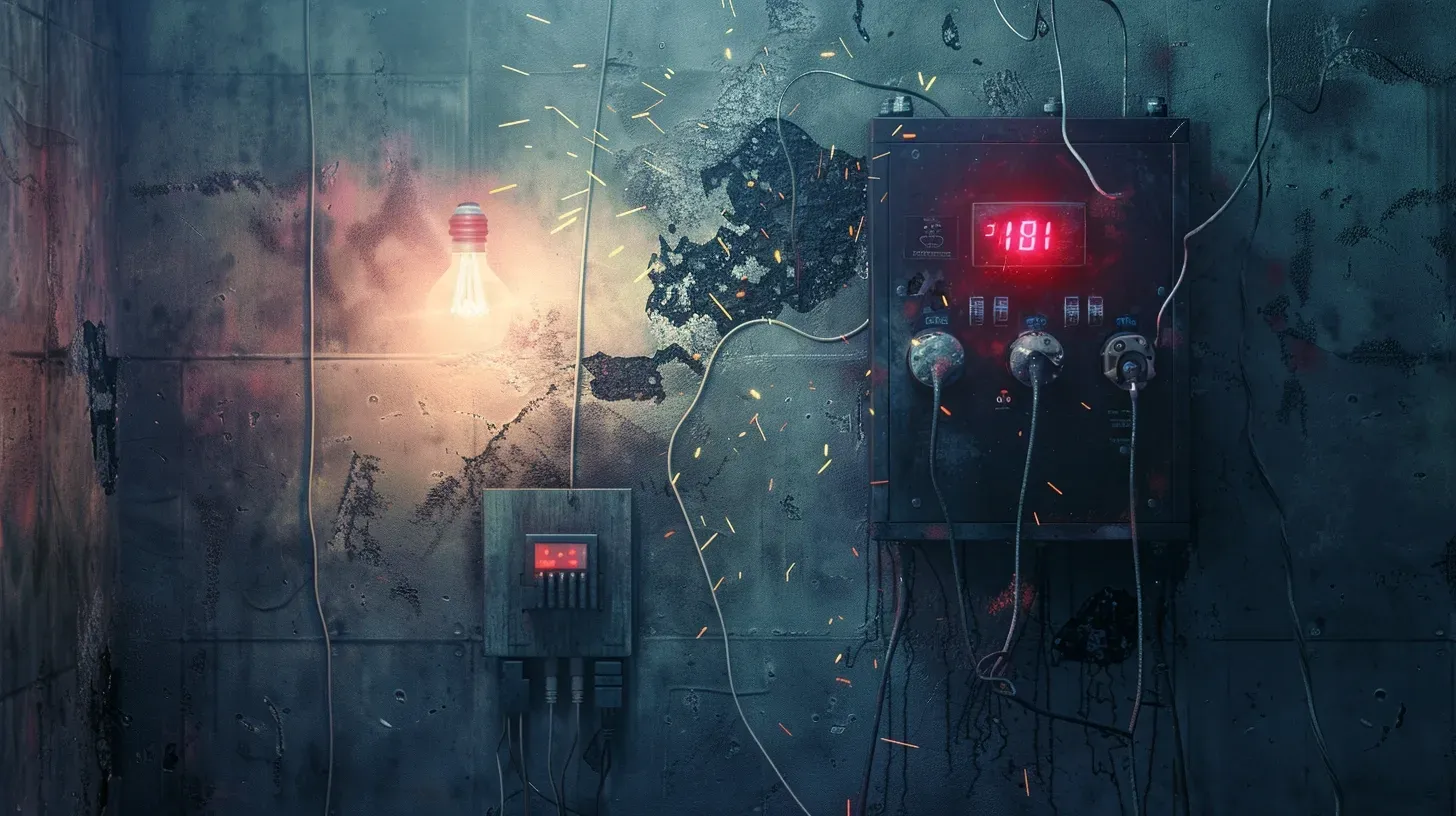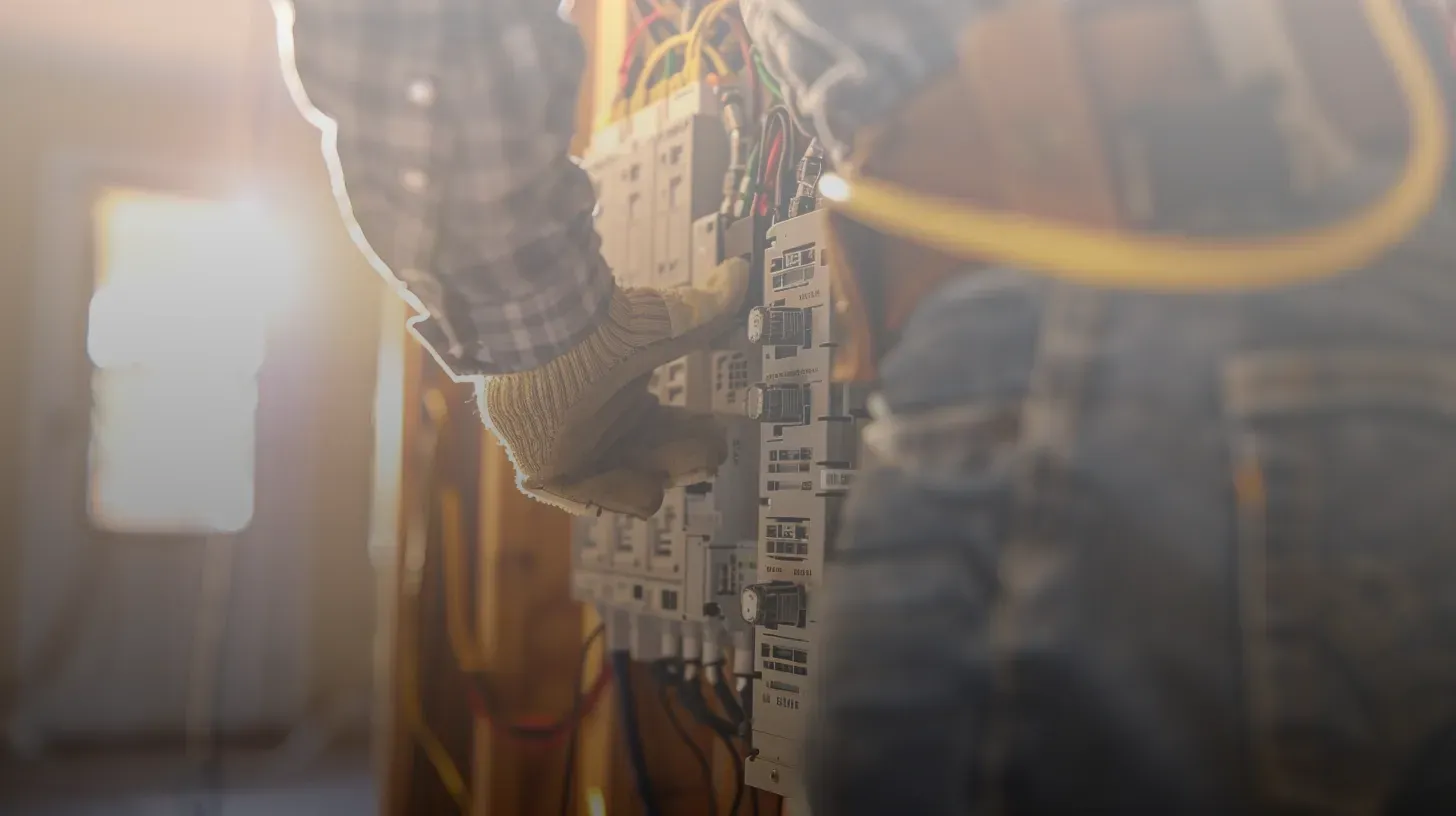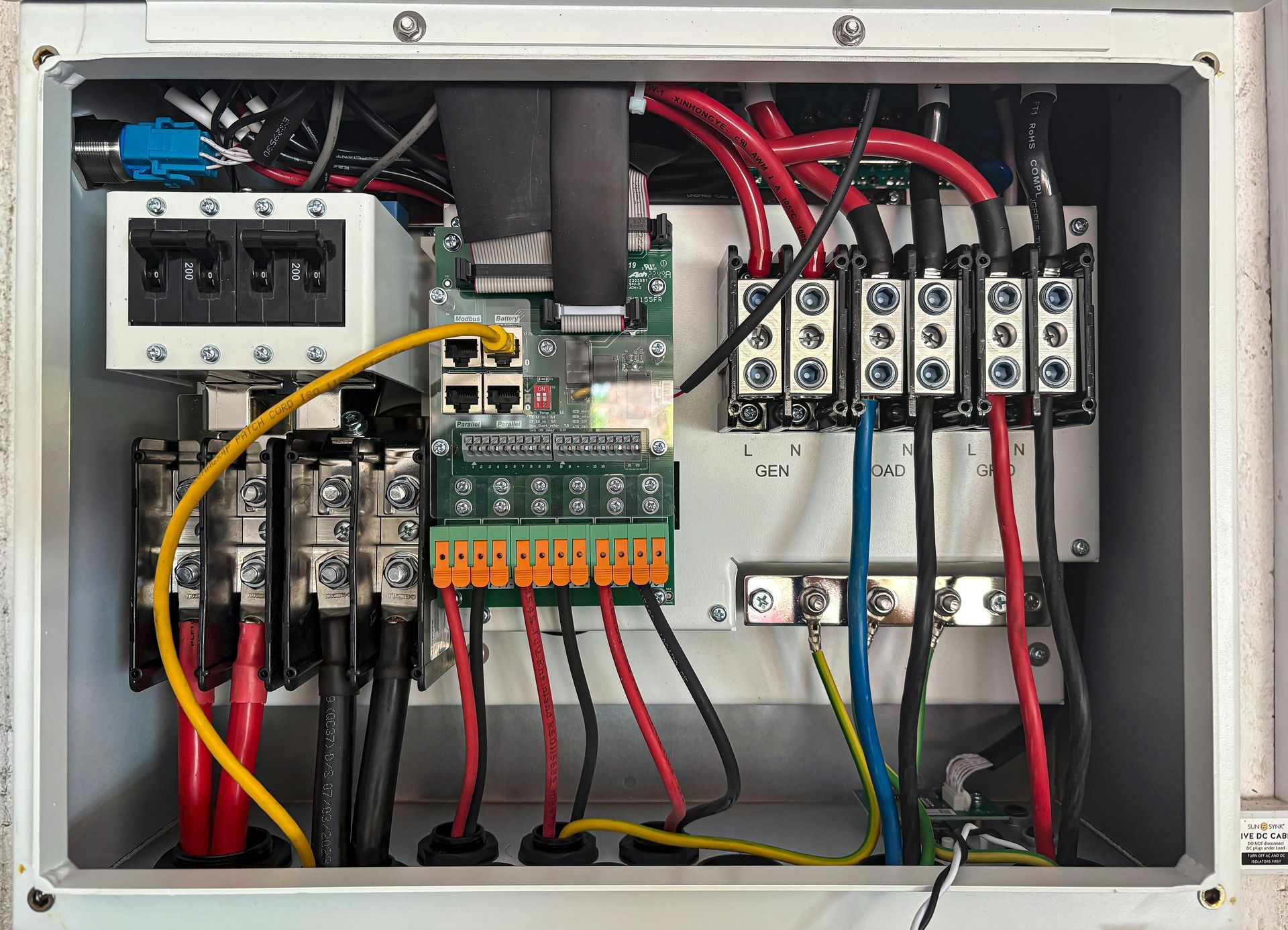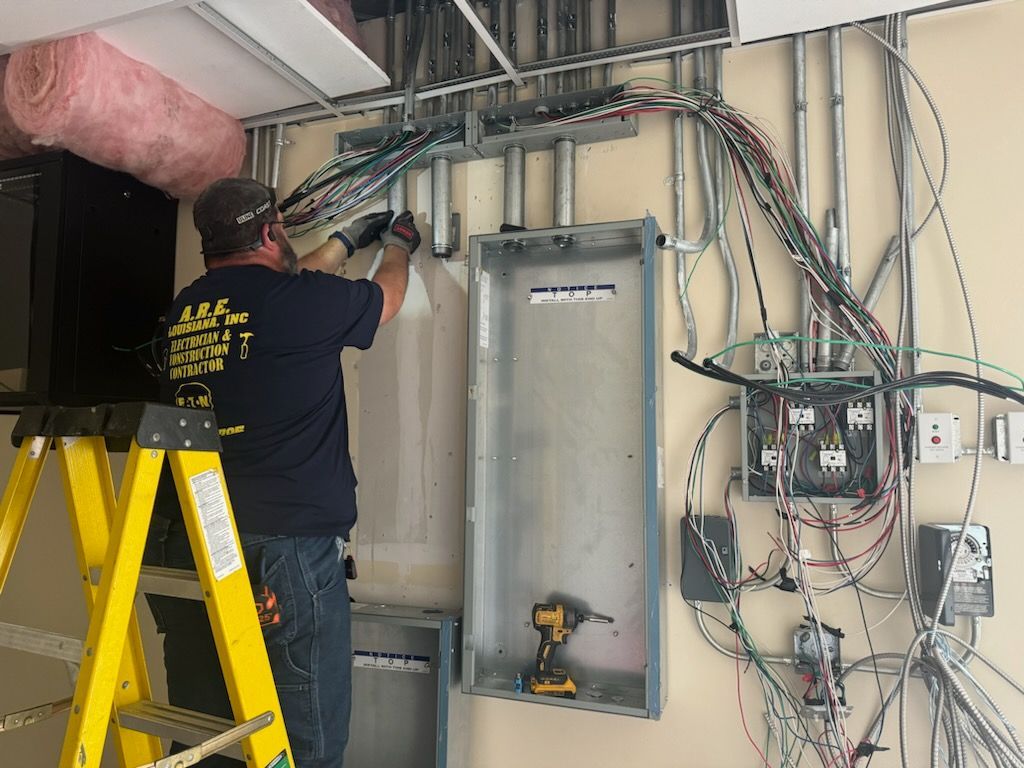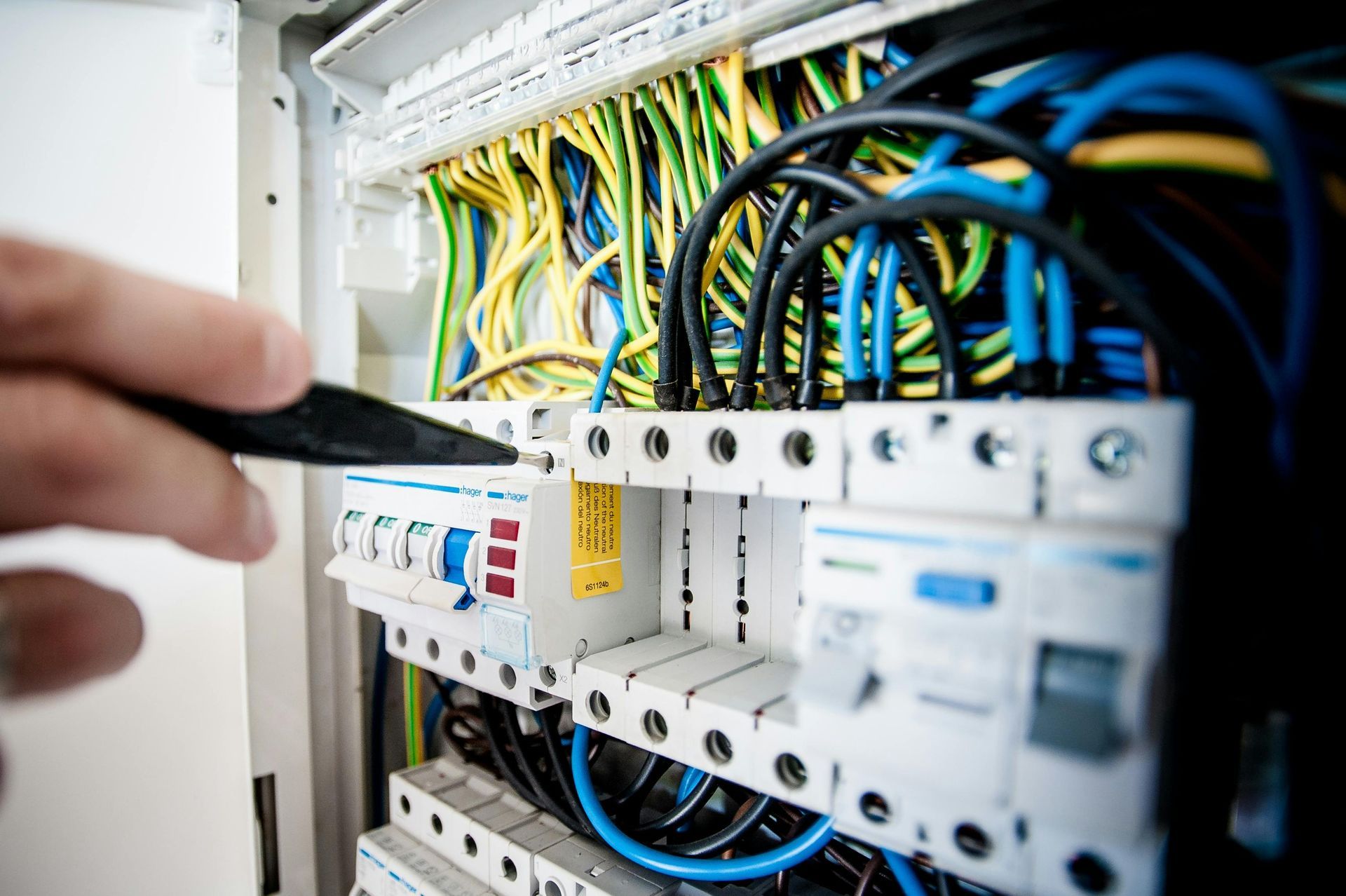Line versus Load Wire: Key Differences Every Homeowner Should Know
Alright, here’s the scoop: line wires bring the power from your breaker panel into a switch or outlet, while load wires send that power out to your lights or devices. Mix them up, and your switch might freak out or trip the breaker—definitely not what you want. Always turn off the power before poking around, and use a tester to spot the live line wire. Stick with the right hookups, and your home’s electrical dance goes smoothly—there’s plenty more to uncover about this!
Key Takeaways
- Line wires carry high voltage power from the utility or breaker panel into a circuit.
- Load wires deliver electricity from switches or breakers to appliances, lights, or outlets.
- Line wires are often black or red and connect directly to the power source; load wires lead to devices.
- Using a multimeter or voltage tester helps distinguish line wires (live) from load wires (outgoing).
- Correctly identifying and connecting line and load wires ensures safe, functional electrical systems and prevents hazards.
What Are Line Wires and Their Role in Electrical Systems
Think of line wires as the main highways for electricity in your home or building. They’re the first stop where power enters your electrical system, bringing energy straight from the utility company.
Understanding line wire characteristics helps you see why these wires are so essential—they must handle high voltage safely and reliably. Line wire types vary, but most are made of copper or aluminum because these metals conduct electricity well and resist corrosion.
You’ll often find line wires insulated in tough materials to protect against damage and keep you safe. Imagine them as strong, well-paved roads designed to carry heavy traffic without breaking down.
When you know how line wires work, you’re better prepared to appreciate your home’s electric setup, and maybe even join the “home safety savvy” club. So, next time you peek at your breaker box or a switch, you’ll know those wires are the power’s first and essential path!
Understanding Load Wires and Their Function
Load wires are the roads electricity takes after it leaves the main power source, delivering energy right where you need it—like your lights, outlets, and appliances.
Think of them as the busy streets guiding power safely to your cozy corners and handy gadgets. Load wire characteristics include their ability to handle electrical current flowing out from switches or breakers to your devices, so they’re built to be reliable and safe.
You’ll often find them in wiring setups where the electrical path continues beyond a switch, making sure your light turns on only when you want it to.
Load wire applications aren’t just limited to lighting; they power outlets, fans, and any other load downstream in your home’s circuits.
Understanding these wires helps you appreciate how your home stays lit and lively, and it’s an essential step if you ever want to tinker with your wiring—just remember, safety first!.
How to Identify Line and Load Wires Safely
Alright, before you start poking around wires, it’s smart to give them a good look and spot any labels or colors that hint at which is which.
Then, grab your multimeter and double-check the voltage to make sure you’re dealing with the right wire—safety first, right?
Trust me, a little patience here saves you from a shocking surprise later!
Visual Wire Inspection
Before you plunge into any electrical work, taking a close look at the wires can save you a lot of headaches—and maybe a few sparks, too.
Visual inspection is your first buddy in wire identification. Here’s how to spot line and load wires safely:
- Check the wiring labels or markings—manufacturers usually mark line wires near the breaker.
- Look for the wire’s path; line wires bring power in, so they often connect to the circuit breaker, while load wires lead out to your devices.
- Notice the color codes—line wires are often black or red, and load wires might be different colors, but never trust this alone!
Testing With Multimeter
Three quick tests with a multimeter can make your life way easier when figuring out which wires are line and which are load.
First, get familiar with multimeter basics—set it to measure AC voltage. Carefully turn off the power, then turn it back on for testing. Touch one probe to the ground or neutral, and the other to each wire. The wire showing voltage is your line wire, carrying power in.
Next, switch the power off again and test continuity between the wires and the device; the
load wire will complete the circuit to your fixture or switch.
Common Applications of Line and Load Wires in Home Wiring
Since line and load wires play different roles in your home's electrical system, knowing where each one goes can save you from a lot of headaches.
When you’re wiring common appliances or switches, following wiring standards helps keep everything safe and working smoothly.
Here are three common applications where line and load wires come into play:
- Light switches: The line wire brings power in, while the load wire sends power out to the light fixture.
- GFCI outlets: Line wires connect the power source, and load wires protect downstream outlets with ground-fault protection.
- Smart home devices: These often rely on correctly wired line and load wires to control power flow without tripping breakers.
Understanding these setups lets you join the homeowner club that knows their stuff, avoiding costly mistakes and electrical mishaps.
It’s like knowing the secret handshake of your home’s wiring world!
Importance of Correctly Connecting Line and Load Wires
If you mix up the line and load wires, your electrical setup can quickly turn into a headache waiting to happen. You might think it’s no big deal, but wiring them wrong can cause switches not to work or even trip your breaker.
Following correct wiring practices isn’t just about getting things to run smoothly—it’s about keeping your whole home safe. When you connect line and load wires properly, you’re respecting electrical safety standards designed to protect you and your family from shocks or fires.
Plus, it makes troubleshooting way easier down the road. Think of it like following a recipe; skipping a step or swapping ingredients can spoil the whole dish.
Troubleshooting Tips for Line and Load Wire Issues
When your switch or outlet isn’t playing nice, it’s often because the line and load wires got mixed up somewhere along the way. Don’t worry—you’re not alone in facing this, and a few smart troubleshooting techniques can get you back on track.
Start with these steps to check your wire connection:
- Turn off the power to the circuit before digging in. Safety first, always.
- Identify the wires: Use a voltage tester to find the line wire (power source) and the load wire (leading to other devices).
- Double-check your connections: Make sure the line wire is connected to the correct terminal labeled “Line” and the load wire to “Load.” A simple swap here often fixes the issue.
Safety Precautions When Working With Line and Load Wires
Mixing up line and load wires can cause more than just a frustrating switch or outlet. You’re not just dealing with a simple mix-up; you’re inviting serious electrical hazards into your home.
So, before you dig in, always cut the power at the breaker. It’s the easiest way to keep you and your house safe. Remember, wire safety isn’t just about avoiding a shock—it’s about preventing fires and costly repairs.
Use a voltage tester to double-check that the wires are dead before touching them. If you’re unsure which wire is which, label them or take a photo for reference—it’s way better than guessing later.
Keep your workspace dry and avoid working with wet hands; water and electricity don’t mix, no exceptions. And hey, if any part of this feels tricky, call a professional like A.R.E. Louisiana electricians.
You belong in a safe, cozy home—not tangled in wires and worry!

Frequently Asked Questions
Can line and load wires be the same color?
You might think line and load wires can share color coding, but wiring standards insist otherwise. To keep your home safe and belong to a responsible community, always follow distinct colors for each wire type.
Do line and load wires affect electrical bill costs?
You won’t see your energy consumption or electrical bill costs change just because of line and load wires. However, ensuring proper wiring efficiency helps your system run smoothly, keeping your home safe and energy use optimized.
Are line and load wires used in outdoor wiring?
Yes, you’ll find line and load wires in outdoor wiring to guarantee electrical safety. Using them correctly helps protect your home and loved ones, creating a safe environment where everyone feels secure and connected.
Can smart home devices detect line vs load wires?
Ever wonder if smart devices have a sixth sense? While they enhance wiring safety, they can't directly detect line vs load wires. You’ll still need a proper tester to keep your smart home safe and connected.
What tools measure voltage differences in line and load wires?
You can use voltage testers or a multimeter to measure voltage differences in wires. With a multimeter, you’ll get precise readings, helping you feel confident and connected while working safely on your home’s electrical system.
Final Thoughts
Now that you know
line wires bring the power in and
load wires send it out, mixing them up can turn your simple switch into a confusing puzzle. It’s like knowing who’s driving and who’s along for the ride—get it wrong, and nothing moves. So, take your time, double-check, and don’t be shy to ask
A.R.E. Louisiana electricians for help. Remember, a little care now saves a lot of sparks later!


